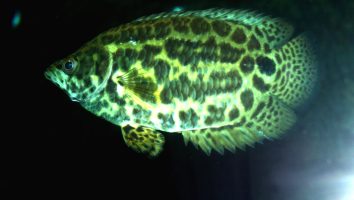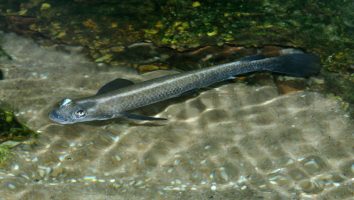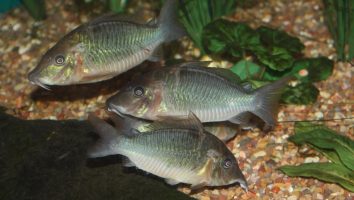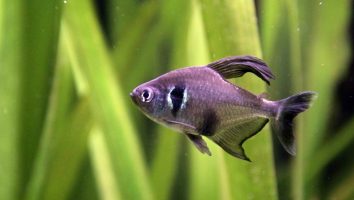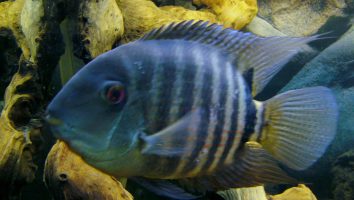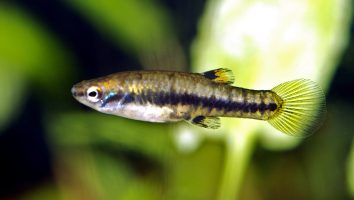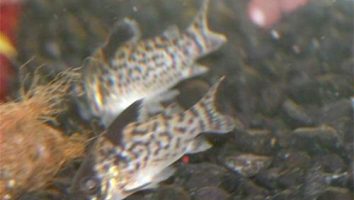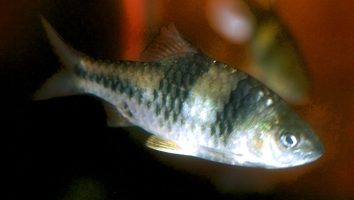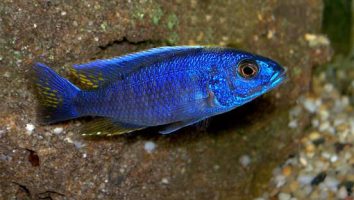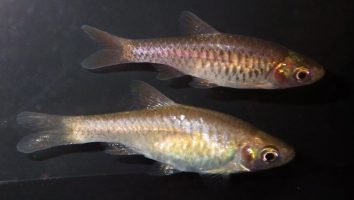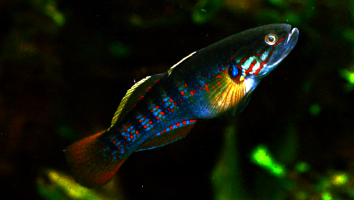The West African lungfish is a fascinating and unique freshwater fish that is sure to add intrigue to your aquarium.
This species is not for everyone, however, as they require a very specific type of setup and care. But if you’re up for the challenge, these fish can be very rewarding.
In this guide, we’ll teach you everything you need to know about West African lungfish care. From tank size and water requirements, to diet and tank mates.
Table of contents
Species overview
The West African lungfish (scientific name: Protopterus annectens) is a type of fish that’s native to various parts of West Africa.
They tend to inhabit shallow water with a lot of vegetation, although they can also be found in deeper water as well.
West African lungfish are some of the most unique fish in the world due to their ability to breathe air. They have a lung-like sac that helps them to take in oxygen when they’re not in water.
This adaptation is something that’s helped them to survive in their native habitat for millions of years.
West African lungfish are also notable for their extremely long lifespan. They can live for over 50 years in captivity!
Appearance
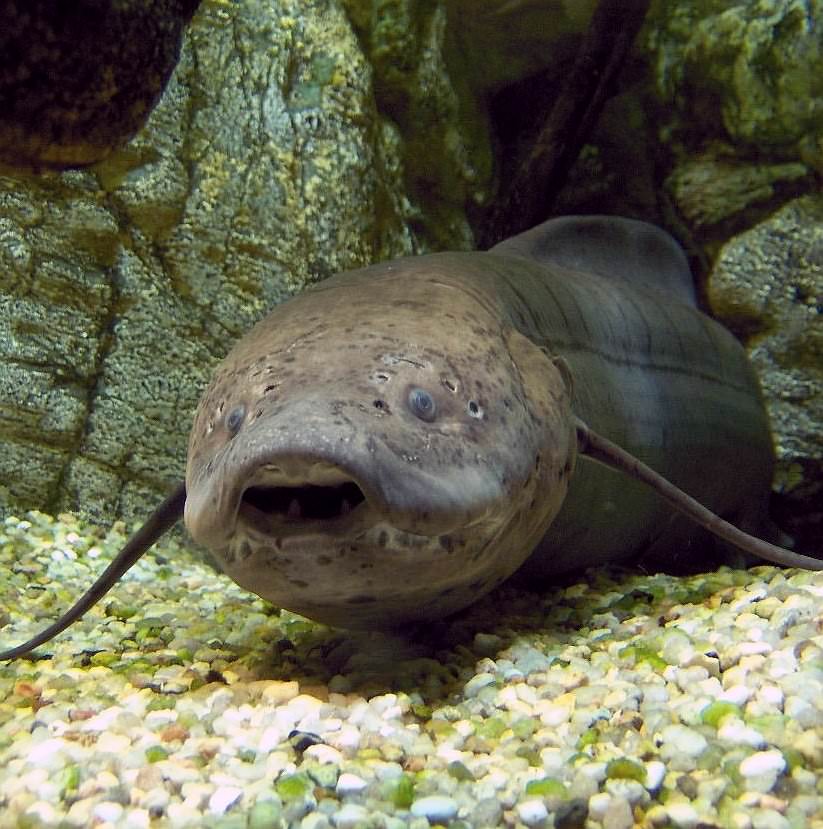
The first thing you’ll notice about this freshwater fish is their long bodies and fins. They can easily grow to be over 4 feet long in some cases, but the average size is usually around 2-3 feet.
Their bodies are very eel-like with a small head and a long tapering tail. The majority of their body is covered in small scales that have a shiny appearance.
The dorsal fin on these fish is very long and extends almost the entire length of their body. It starts just behind their head and runs all the way back to their tail.
The anal fin is also very long, but it’s not as tall as the dorsal fin. It starts about halfway back on the body and ends just before the tail.
The pectoral and pelvic fins are small and located on the sides of the fish near the head.
The caudal fin is large and fan-shaped. It’s located on the end of the fish’s tail and helps them to move through the water.
West African lungfish have a unique ability to breathe air. They have a long tube-like structure that extends from their mouth to the surface of the water. This allows them to get oxygen from the air when they need it.
Lifespan
The maximum lifespan of a West African lungfish in captivity is unknown. In the wild, they can live for over 50 years!
While we don’t know exactly how long they can live in captivity, we do know that their lifespan is significantly shorter. This is due to a number of factors, including the stress of captivity, poor water quality, and inadequate diets.
Even with all of these factors working against them, West African lungfish in captivity can still live for 20 years or more.
Size
The West African lungfish is the largest freshwater fish in the world, with some individuals reaching over 6 feet in length and weighing over 200 pounds.
Tank
Tank Size
The recommended tank size for a West African lungfish is 500 gallons. This is one of the largest freshwater fish available and it definitely needs a large tank to accommodate its size.
While you could technically keep this fish in a smaller tank, it’s not recommended. They need a lot of space to move around and a smaller tank will just stress them out.
Water Parameters
TheWest African lungfish is a freshwater fish that is native to the rivers and lakes of West Africa. In the wild, they can grow to be over 6 feet long!
TheWest African lungfish is a hardy fish that can adapt to a range of water conditions. However, they prefer water that is slightly alkaline with a pH of 7.5-8.5.
The water temperature should be kept between 72-82 degrees Fahrenheit.
Ammonia and nitrite levels should be kept at 0 ppm. Nitrate levels should be below 20 ppm.
Water changes of 20-30% should be done every month.
What To Put In Their Tank
The first thing you need to do is decide what type of substrate you want to use. This fish is a burrower, so something that won’t collapse on top of them is ideal.
We recommend a mixture of sand and gravel. This will give them something to burrow into while also providing a little bit of stability.
The next thing you need to consider is what kind of plants you want to put in their tank. These fish are known to eat plants, so you need to be careful about what you choose.
We recommend going with something that’s either fake or very tough (like java moss).
After that, it’s just a matter of adding some rocks and driftwood to the mix. These fish don’t need much in the way of decoration, so a few pieces should be plenty.
Common Diseases
While the West African lungfish is a pretty tough fish, there are still a few diseases that you need to be on the lookout for.
The most common disease that these fish experience is called “ Hole in the Head Disease”. This is a pretty serious condition that is caused by a parasite called Hexamita.
This disease will cause a lesion to form on the fish’s head, and if left untreated it can be fatal. The best way to treat this disease is to use a medication that is specifically designed to kill Hexamita.
Another disease that these fish are prone to is “Dropsy”. This is a bacterial infection that causes the fish’s scales to protrude. If left untreated, this disease can also be fatal.
The best way to treat Dropsy is to use a broad spectrum antibiotic. You can get these at your local fish store or online.
As with any other fish, the best way to prevent these diseases is to maintain a clean and stable environment. A dirty tank is a breeding ground for disease, so make sure to do regular water changes and keep the tank clean.
Behavior & Temperament
The West African lungfish is a very unique creature. It’s a survivor that has been around for millions of years, and it has the ability to live in water or on land.
In the wild, these fish are found in rivers and lakes in Africa. When the water starts to dry up, the lungfish is able to burrow into the mud and aestivate (a state of dormancy) until the rains come and fill up the water again.
In captivity, they can live in either freshwater or saltwater environments. They’re not too fussy, as long as the water is clean and there is plenty of food.
When it comes to temperament, the West African lungfish is a peaceful creature. It’s not aggressive and will get along with other fish, as long as they’re not too small (the lungfish might see them as food).
Tank Mates
There are a few things to consider when thinking about what tank mates to put with a West African lungfish.
First, these fish are on the larger side. They can reach up to 4 feet in length, so you need to have a tank that can accommodate their size.
Secondly, West African lungfish are bottom-dwellers. They prefer to stay near the substrate where they can scavenge for food.
This means that you need to choose tank mates that occupy different parts of the water column.
Finally, these fish are relatively peaceful. They’re not known for being aggressive, so you don’t need to worry about them harming other fish.
With all of that in mind, here are some compatible tank mates for West African lungfish:
- African cichlids
- Synodontis catfish
- Plecostomus catfish
- Knife fish
- Electric eels
- Arowana
- Bichir
- Polypterus
Breeding
The West African lungfish is a species of fish that is native to Africa. It is a member of the family Protopteridae, which contains six other species of lungfish.
Lungfish are so named because they have a pair of lungs in addition to gills, which allows them to breathe air. The West African lungfish can grow to be up to six feet in length and can live for over 50 years.
Lungfish are not easy to keep in captivity, and they are even harder to breed. In the wild, they live in murky waters with very little oxygen. This makes it difficult to recreate their natural habitat in an aquarium.
The best chance of success is to purchase a juvenile lungfish from a breeder. These fish are more likely to acclimate to captivity and are less likely to die.
Once you have your lungfish, you need to set up an aquarium that is at least 200 gallons. The water should be kept at a temperature of 75 degrees Fahrenheit and should have a pH of 7.5. The tank should also be equipped with a filter and an air stone.
It is also important to provide plenty of hiding places for your lungfish. This can be accomplished with rocks, caves, or plants.
The West African lungfish is a carnivore and needs to be fed live food. This includes crickets, worms, and small fish.
Lungfish are not easy to breed in captivity. The best chance of success is to purchase a juvenile fish from a breeder. Once you have your lungfish, you need to set up an aquarium that is at least 200 gallons. The water should be kept at a temperature of 75 degrees Fahrenheit and should have a pH of 7.5. The tank should also be equipped with a filter and an air stone. It is also important to provide plenty of hiding places for your lungfish. This can be accomplished with rocks, caves, or plants. The West African lungfish is a carnivore and needs to be fed live food. This includes crickets, worms, and small fish.
Conclusion
All in all, the West African lungfish is a great fish for the advanced fish keeper. They’re not for everyone, but if you’re up for the challenge then we think you’ll be very pleased with them.
They’re unique, interesting fish that will add a lot of character to your tank. Just be sure to do your research before you get one and be prepared for the extra work that comes along with owning one.

